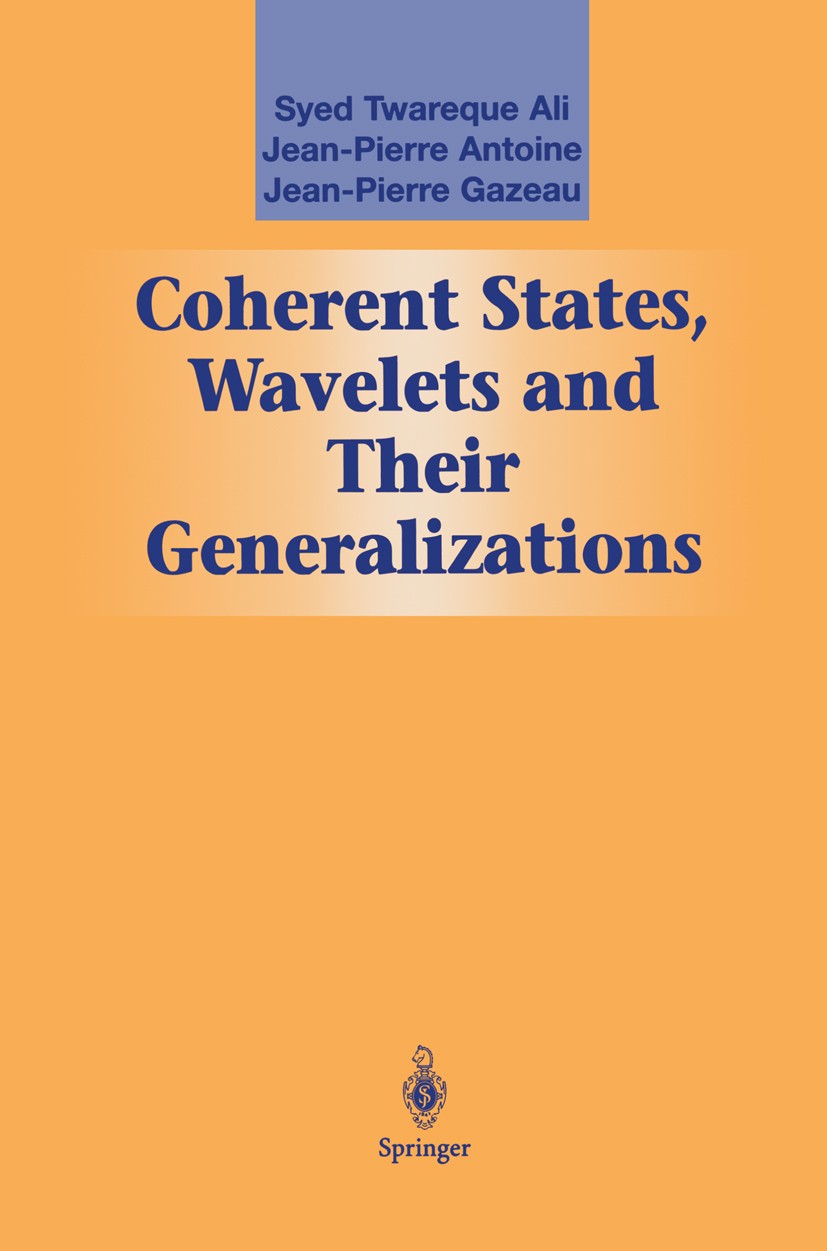| 书目名称 | Coherent States, Wavelets and Their Generalizations | | 编辑 | Syed Twareque Ali,Jean-Pierre Antoine,Jean-Pierre | | 视频video | http://file.papertrans.cn/230/229225/229225.mp4 | | 丛书名称 | Graduate Texts in Contemporary Physics | | 图书封面 |  | | 描述 | Nitya kaaler utshab taba Bishyer-i-dipaalika Aami shudhu tar-i-mateer pradeep Jaalao tahaar shikhaa 1 - Tagore Should authors feel compelled to justify the writing of yet another book? In an overpopulated world, should parents feel compelled to justify bringing forth yet another child? Perhaps not! But an act of creation is also an act of love, and a love story can always be happily shared. In writing this book, it has been our feeling that, in all of the wealth of material on coherent states and wavelets, there exists a lack of a discern able, unifying mathematical perspective. The use of wavelets in research and technology has witnessed explosive growth in recent years, while the use of coherent states in numerous areas of theoretical and experimental physics has been an established trend for decades. Yet it is not at all un common to find practitioners in either one of the two disciplines who are hardly aware of one discipline‘s links to the other. Currently, many books are on the market that treat the subject of wavelets from a wide range of perspectives and with windows on one or several areas of a large spectrum IThine is an eternal celebration ‘" A cosmic Festival of Light | | 出版日期 | Textbook 20001st edition | | 关键词 | Coherent states; Lie groups; group theory; harmonic analysis; quantum measurement problem; quantum-classi | | 版次 | 1 | | doi | https://doi.org/10.1007/978-1-4612-1258-4 | | isbn_ebook | 978-1-4612-1258-4Series ISSN 0938-037X | | issn_series | 0938-037X | | copyright | Springer Science+Business Media New York 2000 |
The information of publication is updating

书目名称Coherent States, Wavelets and Their Generalizations影响因子(影响力)

书目名称Coherent States, Wavelets and Their Generalizations影响因子(影响力)学科排名

书目名称Coherent States, Wavelets and Their Generalizations网络公开度

书目名称Coherent States, Wavelets and Their Generalizations网络公开度学科排名

书目名称Coherent States, Wavelets and Their Generalizations被引频次

书目名称Coherent States, Wavelets and Their Generalizations被引频次学科排名

书目名称Coherent States, Wavelets and Their Generalizations年度引用

书目名称Coherent States, Wavelets and Their Generalizations年度引用学科排名

书目名称Coherent States, Wavelets and Their Generalizations读者反馈

书目名称Coherent States, Wavelets and Their Generalizations读者反馈学科排名

|
|
|
 |Archiver|手机版|小黑屋|
派博传思国际
( 京公网安备110108008328)
GMT+8, 2025-12-17 16:22
|Archiver|手机版|小黑屋|
派博传思国际
( 京公网安备110108008328)
GMT+8, 2025-12-17 16:22


